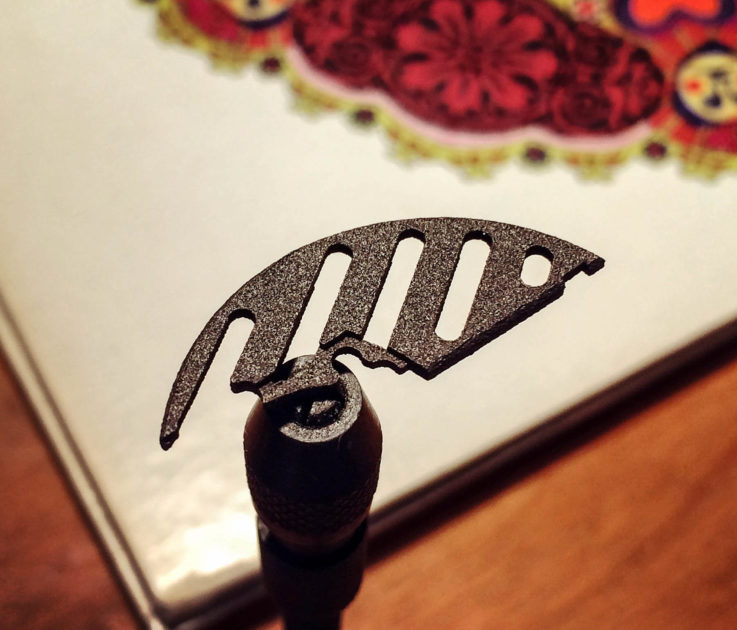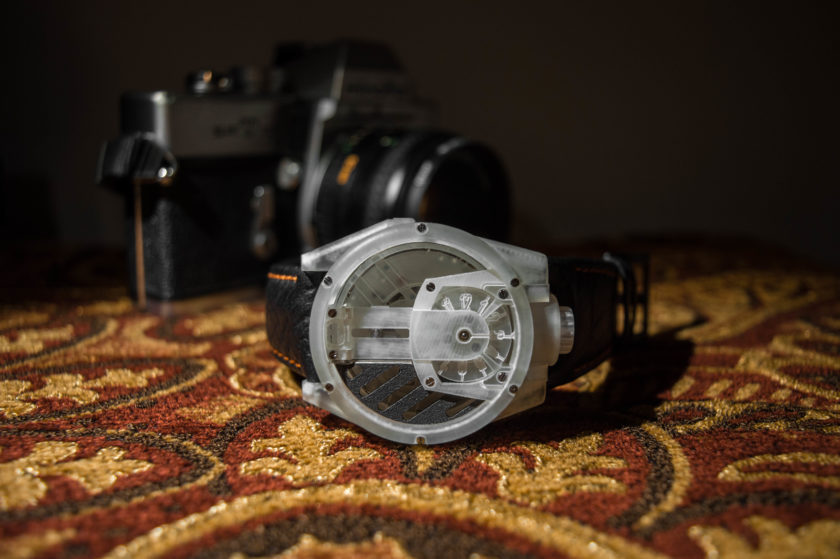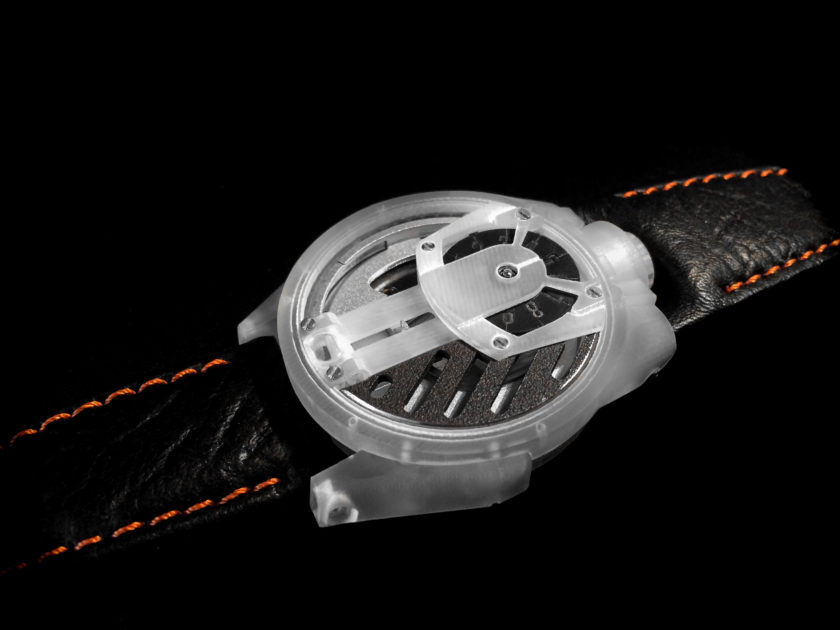
The S-Town podcast recently introduced its millions of listeners to the word horology, or the art of measuring time. Horologists make and fix clocks and watches, but beyond their purely functional craft, they have an artist’s appreciation for the beauty of the mechanics of time. Karel Bachand is no exception. The young horologist is the founder of Barrelhand Timepieces, a company relying on cutting-edge technologies, from 3D printing to social media, to produce a high-end mechanical watch called the Project 1.
“The holy grail of watchmaking,” he has written, ”is to seamlessly mesh engineering and art.”
Karel may be close to reaching that lofty goal, thanks to his passion for old mechanical processes and new manufacturing methods. We recently had a chance to sit down with the watchmaker to discuss 3D prototyping, radical transparency, and haute horlogerie.
How did you get interested in horology?
My interest in watchmaking stems from trying to understand the functionality of old mechanisms and how electronics have simplified them and made many of them obsolete. For example, as a kid I was fascinated that older car engines could move people around without on-board computers or electronic systems.
Watchmaking has gone under serious changes since the quartz crisis of the 1970s. Today you can buy a quartz watch on Amazon for $5 and it will keep far better time than any high-end mechanical watch ever could.
The desire for mechanical timepieces is not so much accuracy as the level of craftsmanship and engineering that goes into them. Think of a watch as a tiny mechanical sculpture you can wear.
How are you using Shapeways and 3D printing in your prototyping process?
Shapeways and the world of accessible 3D printing has played a huge role in the development of this timepiece, especially in reducing R&D costs. Prototyping is one of the most costly and time-consuming aspects of creating a watch, thus 3D printing assists twofold. First, it allows me to get micron-level parts made at a tenth of the cost of traditional manufacturing. This allows me to test complex mechanisms without needing a serious investment.

“Think of a watch as a tiny mechanical sculpture you can wear.”
Furthermore, Shapeways has allowed me to receive parts in record time and far surpasses turnaround times from other companies. If I wanted to order CNC parts, I would first send a manufacturer the part and dimensioned drawings, wait a couple days to receive a quote, purchase it over the phone, and receive the parts two weeks later. Not only was it more time-consuming but it was far more cost-intensive.
Shapeways makes it about as easy as it can get to prototype parts without the need to buy and tune a printer myself to get consistent parts. I simply upload my parts and then select from a wide array of materials (in my case I use Frosted Extreme Detail Plastic due to its level of micron precision) and get them at my doorstep in a week or two. It allows me to fine tune and prototype designs quickly to get them where I need them to be. If I had to make all 25 prototypes using traditional manufacturing, it would have taken much longer — and would have been too cost-intensive to pursue.

“Shapeways makes it about as easy as it can get to prototype parts without the need to buy and tune a printer myself to get consistent parts.”
Are there any reasons watchmakers should stick with the methods they’re used to?
The only main advantage of traditional manufacturing is that with 3D printers you are not able to specify tolerances for certain features such as the fitment between two parts. This, however, is already being resolved, as precision of 3D printers continue to increase to the point where you can build tolerances directly into the part. 3D printing will play a huge part in the future of prototyping and manufacturing as precision and selection of materials continues to increase.
You’ve been sharing your prototypes on Instagram. What advantages are you seeing to this open process?
By sharing the project on Instagram, I am able to document the process of creating a watch from initial sketch to final production. This process is seldom seen, as there is a lot of smoke and mirrors in the industry allowing companies to charge unjustified markups without customers understanding the true value of the watch.

“I wanted to create a community between watch enthusiasts and the watchmaker to exchange ideas and get input on the project.”
By documenting the process I hope that I can hold more companies accountable and that potential collectors can see all the work and process that went into the project so they can make a more informed assessment of the value they are getting. Publicly documenting on social media has also been great for spitballing ideas and allowing other watch enthusiasts to get involved in the development process. I wanted to create a community between watch enthusiasts and the watchmaker to exchange ideas and get input on the project.
Will the finished watches have any 3D printed parts?
Yes, the final production piece will have 3D printed components to pay tribute to the development process and the future of prototyping in the watchmaking industry. Since it is a higher-end piece, I will not be using plastic on the final production, but some components will be made out of DMLS steel, aluminum, and titanium.
You embarked on this project while still a college student in mechanical engineering. Has Project 1 been competition for your studies? A complement? Did you work on it in any of your classes?
Being a full-time student certainly took time away from the project. It also allowed me to learn a litany of useful tools and calculations to improve the project. Although I rarely got to work on the project for classes, I did learn a lot that could be applied. Various calculus courses allowed me to determine a proper cam path curvature for the linear minute mechanism, and manufacturing and assembly courses allowed me to devise stress analysis tests to ensure reliability. I also learned how to simplify parts for manufacturability and ease of assembly, thus reducing overall costs.
The bulk of 3D printing was self-taught through trial and error, although Shapeways has helped me learn a lot about the design constraints of certain materials.

“The world of watchmaking may not be for everyone, but I believe it is the perfect platform to showcase all the advantages 3D printing has to offer for prototyping and manufacturing even the smallest and most intricate of components.”
Who is this watch for?
This timepiece is aimed at haute horlogerie watch collectors who are interested in the future of watchmaking. The industry is dominated by well-established brands that use classical methods of machining, prototyping, and advertising. I wanted to bring something new to the table. Although the design is not for everyone, collectors and enthusiasts alike will admire the fresh take on this older art form.
Why does the world need another mechanical watch?
The world of watchmaking may not be for everyone, but I believe it is the perfect platform to showcase all the advantages 3D printing has to offer for prototyping and manufacturing even the smallest and most intricate of components.
Learn more about Barrelhand Timepieces by visiting their website or Instagram.




Wow, this is amazing what they are creating with 3D printing. I know its a prototype but it looks like it could be ready for production and sales. I love the level of detail into horology. What a passion! It’s really nice to see the mix of art and technology coming together to create these t-devices. The watches look incredible.